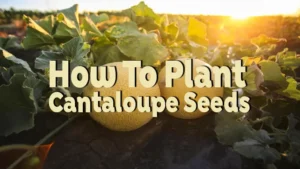10 Brilliant Soil Tests to Elevate Your Garden’s Vitality
- July 2, 2024
- 0 comment
Discover 10 brilliant soil tests that elevate your garden’s vitality! Boost growth and ensure optimal health with these essential checks. Ever wonder why some gardens seem to burst with life, while others struggle to thrive? The secret often lies beneath the surface—in the soil itself. This guide will introduce you to 10 brilliant soil tests that can dramatically elevate your garden’s vitality.

From assessing nutrient levels to identifying hidden problems, these tests are your key to cultivating a thriving garden that is as robust as it is beautiful. Get ready to transform your green space with insights that lead to lush, healthy plant life!
List 10 Brilliant Soil Tests to Elevate Your Garden’s Vitality
- pH Level Test
- Nutrient Content Test
- Soil Texture Analysis
- Soil Compaction Test
- Moisture Content Test
- Organic Matter Content Test
- Soil Salinity Test
- Soil Temperature Test
- Soil Drainage Test
- Presence of Contaminants Test
10 Brilliant Soil Tests
1. pH Level Test

Soil pH profoundly influences the solubility of minerals and nutrients, essential for plant health. Most garden plants thrive in slightly acidic to neutral soil (pH 6.0-7.0). A pH below 6.0 can lead to micronutrient toxicity and phosphorus deficiency, while a pH above 7.0 can cause iron, manganese, and zinc deficiencies. Testing soil pH is straightforward using a kit available at garden centers. The table below illustrates the availability of various nutrients at different pH levels:
| pH Level | Nutrient Availability |
|---|---|
| Below 6.0 | Increased availability of Fe, Mn, Bo, Cu, and Zn |
| 6.0 – 7.0 | Optimal for N, P, K, S, Ca |
| Above 7.0 | Decreased availability of Fe, Mn, Cu, Zn |
After determining your soil’s pH, amendments can be made—lime increases alkalinity, sulfur enhances acidity—tailoring the environment to your plants’ specific needs. This precise adjustment ensures nutrient availability is maximized, promoting robust plant growth.
2. Nutrient Content Test

Plants require macronutrients—nitrogen (N), phosphorus (P), and potassium (K)—each serving critical roles. Nitrogen is pivotal for leaf development, phosphorus for root growth, and potassium for cellular function and overall plant health. A deficiency in any of these can significantly impede your garden’s vitality. Soil tests quantify these nutrients’ levels, guiding the application of balanced fertilizers to rectify any shortages. Here is how each nutrient impacts plant physiology, along with typical deficiency symptoms:
| Nutrient | Function | Deficiency Symptoms |
|---|---|---|
| Nitrogen (N) | Promotes leaf growth and green coloration | Yellowing of older leaves, stunted growth |
| Phosphorus (P) | Essential for energy transfer and root development | Dark green or purplish leaves, delayed maturity |
| Potassium (K) | Regulates water use, improves disease resistance | Yellowing at leaf edges, curling of leaf tips |
Regular nutrient testing not only ensures that plants have access to essential nutrients but also helps avoid the detrimental effects of over-fertilization, such as nutrient burn or environmental runoff issues.
3. Soil Texture Analysis

Soil texture, determined by the proportion of sand, silt, and clay, plays a critical role in water retention, nutrient availability, and air circulation. The Jar Test is a simple method to evaluate this: mix soil with water in a clear jar, shake well, and allow it to settle into layers—sand settles first, followed by silt, and clay on top. Here’s a detailed breakdown of how each soil type affects plant growth:
| Soil Type | Water Retention | Nutrient Availability | Aeration | Ideal Plants |
|---|---|---|---|---|
| Sand | Low | Low | High | Succulents, cacti, bulbs |
| Silt | Medium | Medium | Medium | Grasses, shrubs, perennials |
| Clay | High | High | Low | Fruit trees, ornamental shrubs |
| Loam | Optimal | Optimal | Optimal | Most vegetables and flowering plants |
Understanding your soil’s texture allows you to tailor gardening practices to optimize growth conditions, such as amending clay soil with organic matter to improve aeration or adding coarse sand to sandy soil to enhance water and nutrient retention.
4. Soil Compaction Test

Compacted soil significantly restricts root expansion, water infiltration, and gaseous exchange necessary for root respiration. The Screwdriver Test offers a quick compaction assessment: if pushing a screwdriver into the soil requires substantial effort, compaction is likely an issue. Aerating the soil is a direct remedy, enhancing root penetration and improving moisture and nutrient uptake. The table below outlines the impact of soil compaction and the effectiveness of aeration:
| Compaction Level | Root Growth | Water Infiltration | Aeration Benefit |
|---|---|---|---|
| High | Severely limited | Poor | Essential for restoring soil health |
| Medium | Moderately limited | Moderate | Beneficial to encourage growth |
| Low | Unrestricted | Optimal | Minimal or not necessary |
Aerating techniques can vary from manual aeration with a garden fork for small areas to mechanical aerators for larger landscapes. Regular aeration, especially in high-traffic areas or heavy clay soils, ensures the soil environment remains conducive to healthy plant growth.
5. Moisture Content Test

Maintaining the correct soil moisture balance is essential for optimal plant health, as both overwatering and underwatering can lead to adverse effects such as root rot or dehydration. To accurately gauge moisture levels, gardeners can employ a soil moisture meter. This device provides a quantitative moisture level, typically on a scale from dry to wet, allowing for precise watering adjustments.
For those without a meter, a practical DIY method involves the Feel and Appearance Test:
- Dry Soil: Feels powdery to the touch and will not hold together when squeezed.
- Ideal Moisture: Feels damp, forms a ball when squeezed, but crumbles easily when poked.
- Wet Soil: Feels slick, sticks together tightly when squeezed, and water may ooze out.
To assist in understanding and managing soil moisture, here’s a table correlating soil types with their moisture retention capabilities and the implications for watering practices:
| Soil Type | Moisture Retention | Typical Moisture Level | Watering Strategy |
|---|---|---|---|
| Sand | Low | Quick to dry out | Frequent, light watering needed |
| Silt | Moderate | Retains moisture well | Moderate watering frequency |
| Clay | High | Slow to dry, prone to waterlogging | Less frequent, deep watering |
| Loam | Optimal | Maintains balance well | Evenly spaced, consistent watering |
Adjusting your watering schedule based on the soil type and observed moisture levels can significantly enhance plant health. For instance, sandy soils require more frequent watering due to their poor water retention, whereas clay soils, which retain moisture longer, may need less frequent but deeper watering to encourage root growth deeper into the soil.
6. Organic Matter Content Test

Organic matter is a key component of healthy soil, serving multiple critical functions such as improving soil structure, enhancing nutrient availability, and increasing moisture retention. A higher organic matter content typically leads to a more fertile and resilient soil environment.
To quantitatively assess organic matter content, a simple test involves examining the color and texture of the soil:
- Darker Soil: Indicates higher organic matter, as organic compounds generally darken soil as they decompose.
- Texture: Soil with high organic content tends to be looser and more crumbly, which facilitates better root growth and water infiltration.
For a more precise measurement, soil organic matter can be assessed using a Loss on Ignition (LOI) test, which estimates organic content by measuring the weight loss of a soil sample after it is burned at high temperature (around 360°C). Here’s how different levels of organic matter can impact soil properties and plant health:
| Organic Matter % | Water Holding Capacity | Nutrient Availability | Soil Structure |
|---|---|---|---|
| Low (<3%) | Reduced | Lower | Compacted |
| Moderate (3-5%) | Good | Moderate | Good |
| High (>5%) | Excellent | High | Loose and friable |
Enhancing your soil’s organic matter is straightforward and highly beneficial:
- Compost: Adds a variety of nutrients and improves soil structure.
- Aged Manure: Provides nitrogen, a vital nutrient for plants.
- Leaf Mold: Improves water retention and soil texture.
Incorporating these organic materials not only enriches the soil but also fosters a healthy microbial ecosystem, crucial for nutrient cycling and disease suppression. The addition of organic matter is especially beneficial in degraded or nutrient-poor soils, where it can significantly boost productivity and plant health.
By maintaining a healthy level of organic matter, gardeners can ensure their soil is optimally poised to support a thriving garden. Regular testing and amendment can transform even suboptimal soil into a rich, productive medium over time.
7. Soil Salinity Test

Soil salinity is a crucial factor affecting plant health, particularly in regions prone to drought or where de-icing salts are used. High salinity levels can lead to osmotic stress, preventing plants from absorbing sufficient water and nutrients, and can ultimately cause ion toxicity.
To accurately measure soil salinity, gardeners can use an electrical conductivity (EC) meter, which quantifies the total dissolved salts in the soil. Here’s a breakdown of how salinity levels, measured in deciSiemens per meter (dS/m), affect soil health and plant growth:
| Salinity Level (dS/m) | Effect on Plant Growth | Management Strategy |
|---|---|---|
| Low (<2 dS/m) | Minimal impact on most plants | Regular monitoring |
| Moderate (2-4 dS/m) | Growth reduction in sensitive plants | Leaching, addition of organic matter |
| High (>4 dS/m) | Severe growth inhibition, potential toxicity | Intensive leaching, gypsum application |
Strategies to Manage High Soil Salinity:
- Leaching: This involves applying large volumes of water to the soil to flush out excess salts. This method is most effective shortly after rain or irrigation when the soil is already saturated, allowing additional water to move salts deeper beyond the root zone.
- Gypsum (Calcium Sulfate): Adding gypsum can help replace sodium ions with calcium on clay particles, improving soil structure and reducing toxicity. This amendment is particularly effective in soils with high sodium content but requires careful calculation to match the gypsum amount to the salinity level.
- Cultivation of Salt-Tolerant Plants: In areas where reducing soil salinity is not feasible, opting for salt-tolerant species can be a practical alternative. Plants like barley, sugar beets, and certain grasses can thrive in higher salinity conditions.
Regular testing for soil salinity, especially in susceptible areas, is crucial for maintaining plant health. By understanding and managing salinity levels, gardeners can prevent potential damage and ensure their plants receive optimal growing conditions, despite challenging environmental factors.
8. Soil Temperature Test
Soil temperature is a critical determinant of seed germination rates, enzymatic activities, and the biological processes of plants. It influences not only the initiation of germination but also the rate of root and shoot growth once germination has occurred. Precise management of soil temperature can dramatically enhance plant health and productivity.

To effectively monitor and manage soil temperature, a soil thermometer is used, which provides accurate temperature readings at various soil depths. This information is crucial for determining the optimal timing for sowing seeds and transplanting seedlings, which can vary significantly depending on the plant species and local climate conditions.
Here’s a detailed table illustrating the optimal soil temperature ranges for germination of various common garden plants, along with the effects of temperatures outside these ranges:
| Plant | Optimal Soil Temp for Germination (°C) | Effects of Suboptimal Temp |
|---|---|---|
| Tomatoes | 16-30 | Below 16°C delays germination, above 30°C may inhibit germination |
| Lettuce | 4-26 | Above 26°C greatly reduces germination rates |
| Peppers | 18-35 | Below 18°C slows germination, above 35°C may damage seeds |
| Carrots | 7-30 | Below 7°C delays germination, above 30°C reduces germination efficiency |
| Cucumbers | 16-35 | Below 16°C inhibits germination, above 35°C risks seed decay |
Strategies for Managing Soil Temperature:
- Mulching: Applying a layer of mulch can help stabilize soil temperature, keeping it warmer in cool weather and cooler in hot weather. Organic mulches such as straw or wood chips are particularly effective.
- Using Cloches or Row Covers: These tools can create micro-environments that moderate soil temperature, accelerating early season growth.
- Adjusting Watering Times: Watering in the early morning or late evening can help maintain a stable soil temperature, avoiding the extremes that can occur during midday or at night.
Regular monitoring of soil temperature is vital for aligning gardening practices with the natural requirements of plants. By managing soil temperature carefully, gardeners can optimize plant growth cycles and enhance the overall productivity of their gardens.
9. Soil Drainage Test

Proper soil drainage is crucial for maintaining healthy plant roots and preventing issues such as root rot and fungal diseases caused by excessive moisture. An effective way to assess soil drainage is through the Percolation Test, which measures the rate at which water drains through the soil.
Procedure for the Percolation Test:
- Dig a hole approximately 12 inches deep and 6 inches in diameter.
- Fill the hole with water and allow it to drain completely to saturate the soil. This pre-saturation helps mimic natural conditions.
- Refill the hole with water and measure the time it takes to drain from full to empty.
The results of this test provide a clear indication of the soil’s permeability. Here’s a table that categorizes drainage rates and their implications for garden management:
| Drainage Rate (inches/hour) | Soil Condition | Implications and Actions |
|---|---|---|
| >2 | Very Rapid | Risk of nutrient leaching; consider increasing organic matter to enhance water retention. |
| 1 to 2 | Ideal | Balanced drainage; suitable for most plants without modification. |
| 0.5 to 1 | Moderately Slow | May require occasional aeration or addition of coarse sand to improve drainage. |
| <0.5 | Poor | Poor aeration and drainage; amend with organic matter and sand, consider raised beds or drainage systems. |
Strategies to Improve Soil Drainage:
- Amending Soil: Incorporating organic matter such as compost improves soil structure and increases its ability to retain and drain water efficiently. For soils with very poor drainage, adding coarse materials like sand or gravel can help to increase the pore spaces within the soil, enhancing water flow.
- Creating Raised Beds: In areas with very slow drainage, raised beds can be an effective solution. They allow water to drain more freely and prevent the saturation of plant roots.
- Installing Drainage Systems: For severe drainage issues, especially in landscape gardens, installing French drains or similar systems can redirect excess water away from sensitive areas, protecting plant health.
Regular testing and management of soil drainage are essential, especially in climates with high rainfall or for gardens with heavy clay soils. By understanding and optimizing the drainage characteristics of your soil, you can ensure a healthier environment for your plants, reducing the risk of water-related stress and diseases.
10. Presence of Contaminants Test

Testing for soil contaminants is essential for ensuring plant health and safety, particularly in areas prone to pollution such as urban environments and former industrial sites. Contaminants such as heavy metals (lead, arsenic, cadmium), petroleum products, and persistent organic pollutants can adversely affect plant growth, soil health, and can even pose health risks to humans through bioaccumulation in edible plants.
Types of Contaminant Tests:
- Heavy Metals: Assessed using atomic absorption spectroscopy or X-ray fluorescence.
- Organic Contaminants: Detected through gas chromatography-mass spectrometry (GC-MS).
- Salts and Chemical Residues: Measured by electrical conductivity tests.
The results from these tests can guide appropriate remediation strategies to mitigate contamination. Here is a table summarizing common soil contaminants, their sources, effects on plants, and typical remediation methods:
| Contaminant | Common Sources | Effects on Plants | Remediation Methods |
|---|---|---|---|
| Lead | Old paint, gasoline, industrial deposits | Stunted growth, chlorosis | Phytoremediation, soil replacement |
| Arsenic | Pesticides, mining operations | Reduced seed germination, root damage | Soil washing, adding iron oxides |
| Cadmium | Industrial waste, phosphate fertilizers | Leaf roll, wilting | Chelating agents, raising soil pH |
| Petroleum | Spills, underground storage leaks | Toxicity, reduced photosynthesis | Bioremediation, physical removal |
Strategies to Manage Soil Contamination:
- Soil Replacement: In cases of severe contamination, replacing the top layer of soil with clean topsoil is often the most straightforward solution.
- Phytoremediation: Some plants, like sunflowers and certain grasses, can absorb contaminants from the soil, gradually reducing contamination levels.
- Raised Beds: Constructing raised beds and filling them with uncontaminated soil ensures that plants grow in a safe environment, isolated from contaminated ground soil.
- Regular Monitoring: Especially in areas with a history of contamination, regular testing for new or persisting contamination is crucial.
Advanced Soil Management Techniques
1. Cover Cropping
Cover crops, such as clover, vetch, and rye, are planted during off-seasons to improve soil structure, enhance nutrient content, and prevent erosion. These plants help fix nitrogen in the soil, suppress weeds, and improve overall soil biodiversity. Incorporating cover cropping into your garden regimen can significantly enrich the soil, making it more fertile and robust for future planting seasons.
2. Mulching Techniques
Mulching is not just about weed control—it’s a vital technique for maintaining moisture levels, regulating soil temperature, and adding organic matter as it decomposes. Different types of mulch, such as straw, wood chips, or leaf litter, can be used depending on your specific garden needs. This section could detail the benefits of each type of mulch and guide gardeners on how to apply them effectively.
3. Permaculture Practices
Introducing permaculture principles can dramatically change how you interact with your garden. Permaculture involves creating a self-sustaining ecosystem that mimics nature. This includes building soil health naturally, conserving resources, and planting perennials that benefit the soil long-term. This part of the article can provide a beginner’s guide to integrating permaculture practices that focus specifically on enhancing soil vitality.
4. Regular Soil Testing
While initial tests provide a snapshot of soil health, regular testing is crucial to monitor changes and progress. This section would emphasize the importance of establishing a soil testing routine, perhaps seasonally or annually, to continually adapt and refine soil management practices based on up-to-date soil data.
Related Post
- How to Build a Barn: A Step-by-Step Guide for Beginners
- How to Build a Sustainable Compost Bin: Easy and Eco-Friendly DIY
- How to Fertilize Bougainvillea: A Complete Guide for Stunning Blooms
- How to Fertilize Apple Trees: Essential Tips for a Bountiful Harvest
- How to Fertilize Lemon Trees: Secrets for Thriving Citrus
- How to Fertilize Avocado Tree: A Step-by-Step Guide for Lush Growth
- 10 Best Bow Saws to Buy in 2024: Top Picks for the Money
- Best Miter Saw For Beginners
- Top 10 Pruning Saws to Buy in 2024: Best for the Money
- 7 Best Pocket Chainsaw
Conclusion
Conducting these 10 soil tests can transform an ordinary garden into a flourishing oasis. By taking the time to understand and improve the soil, gardeners can create a robust foundation for their plants to thrive. Regular testing not only keeps your garden healthy but also makes it resilient against diseases and less favorable conditions. Begin with one test, see the benefits, and gradually incorporate more to develop a deeper understanding and appreciation of your garden’s dynamic ecosystem.
FAQs
- What is the most important soil test for a new gardener to start with?
For new gardeners, starting with a pH level test is crucial. It’s simple to perform and provides essential information about the soil’s acidity or alkalinity, which affects nutrient availability and plant health. - Can I perform these soil tests without specialized equipment?
Yes, many soil tests, such as the jar test for soil texture or the DIY feel test for moisture, can be performed with items you likely have at home. For more precise measurements like pH or nutrient content, affordable testing kits are available at garden centers. - How often should I test my soil?
Ideally, soil should be tested annually, especially in the spring before planting new crops. For more dynamic gardens or those experiencing growth issues, testing seasonally can provide more timely adjustments to soil management practices. - What should I do if my soil test reveals high salinity levels?
If high salinity is detected, consider flushing the soil with large amounts of water to wash away some of the salts. Additionally, incorporating gypsum can help displace sodium ions and improve soil structure. - Is there a quick test to check for soil contaminants?
While home kits can screen for some common contaminants like lead, professional testing is recommended for a comprehensive analysis. This is particularly important for gardens near industrial areas or in urban settings. - How can cover cropping help improve soil after testing?
Cover crops such as clover or rye help fix nitrogen, improve soil structure, and increase organic matter content. Planting cover crops during off-seasons can rejuvenate and prepare soil for future planting. - What is the benefit of mulching based on soil test results?
Mulching can help address several soil issues identified by testing. For example, if a test shows poor moisture retention, organic mulches like straw or wood chips can help maintain soil hydration and improve overall soil health. - Can soil temperature affect the outcome of other soil tests?
Yes, soil temperature can influence the accuracy of biological-based tests, such as those measuring microbial activity or nitrogen availability. It’s best to conduct these tests under consistent and ideal temperature conditions to ensure reliable data.
Ready to transform your garden? Start with these 10 brilliant soil tests to unlock the full potential of your green space. It’s your first step towards a more vibrant and healthy garden. Happy testing!

Emma Hudson
Forestry AuthorEmma's experience in farming shapes her detailed guides on gardening and farming tools, providing practical, actionable advice grounded in real-world experience. Her work targets both newcomers and experienced farmers, aiming to enhance their practices with a mix of traditional wisdom and modern techniques. By making complex agricultural concepts accessible, Emma's guides serve as valuable tools for those navigating the challenges of contemporary farming, offering strategies for sustainable success.













Leave your comment